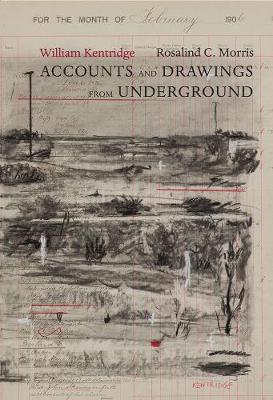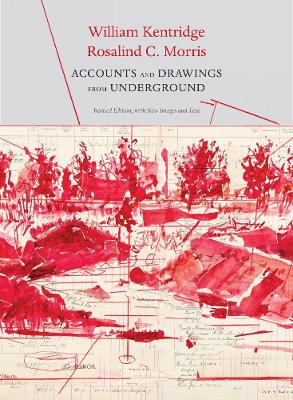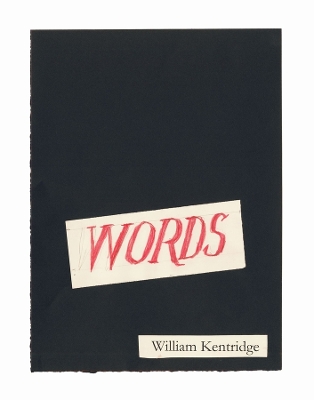The Africa List
4 total works
For more than three decades, artist William Kentridge has explored in his work the nature of subjectivity, the possibilities of revolution, the Enlightenment's legacy in Africa, and the nature of time itself. Though his pieces have allowed viewers to encounter the traditions of landscape and self-portraiture, the limits of representation, the possibilities for animated drawing, and the labor of art, a guide to understanding the full scope of his art has been unavailable until now. For five days, Kentridge sat with Rosalind C. Morris to talk about his work. The result - That Which Is Not Drawn - is a wide-ranging conversation and deep investigation into the artist's techniques and the psychic and philosophical underpinnings of his body of work. In these pages, Kentridge explains the key concerns of his art, including the virtues of bastardy, the ethics of provisionality, the nature of translation, and the activity of the viewer. And together, Kentridge and Morris trace the migration of images across his works and consider the possibilities for a revolutionary art that remains committed to its own transformation.
Here, in this engaging dialogue, we at last have a guide to the continually exciting, continually changing work of one of our greatest living artists.
Here, in this engaging dialogue, we at last have a guide to the continually exciting, continually changing work of one of our greatest living artists.
Accounts and Drawings from Underground
by William Kentridge and Rosalind C. Morris
Published 3 March 2015
Over the last twenty years, William Kentridge has built a world-wide reputation as a contemporary artist, best known for his series of ten animated films created from charcoal drawings. The films introduced a significant character in contemporary fiction: Soho Eckstein, a Highveld mining magnate and Kentridge's alter ego. In The Soho Chronicles, Kentridge's brother, Matthew, shares a never-before-seen perspective on both William and Soho that sheds new light on the creator and his alter ego. Richly illustrated, the book includes a special feature that connects with smartphones and tablets. In Accounts and Drawings from Underground, William Kentridge and Rosalind C. Morris bring us an unprecedented collaboration using the pages of the 1906 Cash Book of the East Rand Proprietary Mines Corporation. Kentridge contributes forty landscape drawings in response to the transient terrain mining, while Morris plumbs the text of the cash book to generate a unique narrative account, drawing together the stories of migrant laborers and charting the flows of capital and desire.
Accounts and Drawings from Underground
by William Kentridge and Rosalind Morris
Published 16 March 2021
In Accounts and Drawings from Underground, published in 2015, renowned artist William Kentridge and scholar Rosalind C. Morris brought us an unprecedented collaboration, taking pages of the 1906 Cash Book of the East Rand Proprietary Mines Corporation in South Africa and transforming them into something entirely new. While Kentridge contributed breathtaking landscape drawings in response to the transient terrain mining created, Morris plumbed the text of the cash book to generate a unique narrative account.
Now, they revisit those ruined mines, with a visual and verbal addendum that provides an account of the ongoing metamorphosis of the world that gold mines created. Kentridge works on the threshold between the visible and the invisible, while Morris mines the unsaid in order to make it understandable. Together they’ve created a landmark book that chronicles the exploitation of African communities and sheds further light on global Black history. With fifteen stunning new color drawings by Kentridge and an additional coda, this revised edition of Accounts and Drawings from Underground continues its remarkable documentation of the stories of migrant laborers and the flows of capital and desire, providing us with a palpable sense of a vanished world.
Now, they revisit those ruined mines, with a visual and verbal addendum that provides an account of the ongoing metamorphosis of the world that gold mines created. Kentridge works on the threshold between the visible and the invisible, while Morris mines the unsaid in order to make it understandable. Together they’ve created a landmark book that chronicles the exploitation of African communities and sheds further light on global Black history. With fifteen stunning new color drawings by Kentridge and an additional coda, this revised edition of Accounts and Drawings from Underground continues its remarkable documentation of the stories of migrant laborers and the flows of capital and desire, providing us with a palpable sense of a vanished world.
An exploration of phrases and excerpts that inspire a major contemporary artist.
Over the past several years, renowned South African artist William Kentridge has made a collection of particular phrases and sentences that have called out to him from the pages of whatever he has been reading. And these phrases, which he has written into a studio notebook titled Words, have been put to work in many of his artistic projects. Kentridge has often begun a project by paging through the notebook, waiting for a phrase to claim its place in the new work. The text excerpts come from many sources: Aimé Césaire, Yehuda Amichai, Sigmund Freud, James Joyce, Setswana proverbs, the Book of Ecclesiastes, Tristan Tzara’s Dada Manifesto, and a range of eastern European poets. This volume presents a selection made from the notebook, with phrases arranged neither randomly nor with a clear agenda but finding a space in between. Cleverly designed by the artist and beautifully produced, Words is a thought-provoking collection that provides a window to the mind of a contemporary creative genius.
Over the past several years, renowned South African artist William Kentridge has made a collection of particular phrases and sentences that have called out to him from the pages of whatever he has been reading. And these phrases, which he has written into a studio notebook titled Words, have been put to work in many of his artistic projects. Kentridge has often begun a project by paging through the notebook, waiting for a phrase to claim its place in the new work. The text excerpts come from many sources: Aimé Césaire, Yehuda Amichai, Sigmund Freud, James Joyce, Setswana proverbs, the Book of Ecclesiastes, Tristan Tzara’s Dada Manifesto, and a range of eastern European poets. This volume presents a selection made from the notebook, with phrases arranged neither randomly nor with a clear agenda but finding a space in between. Cleverly designed by the artist and beautifully produced, Words is a thought-provoking collection that provides a window to the mind of a contemporary creative genius.



